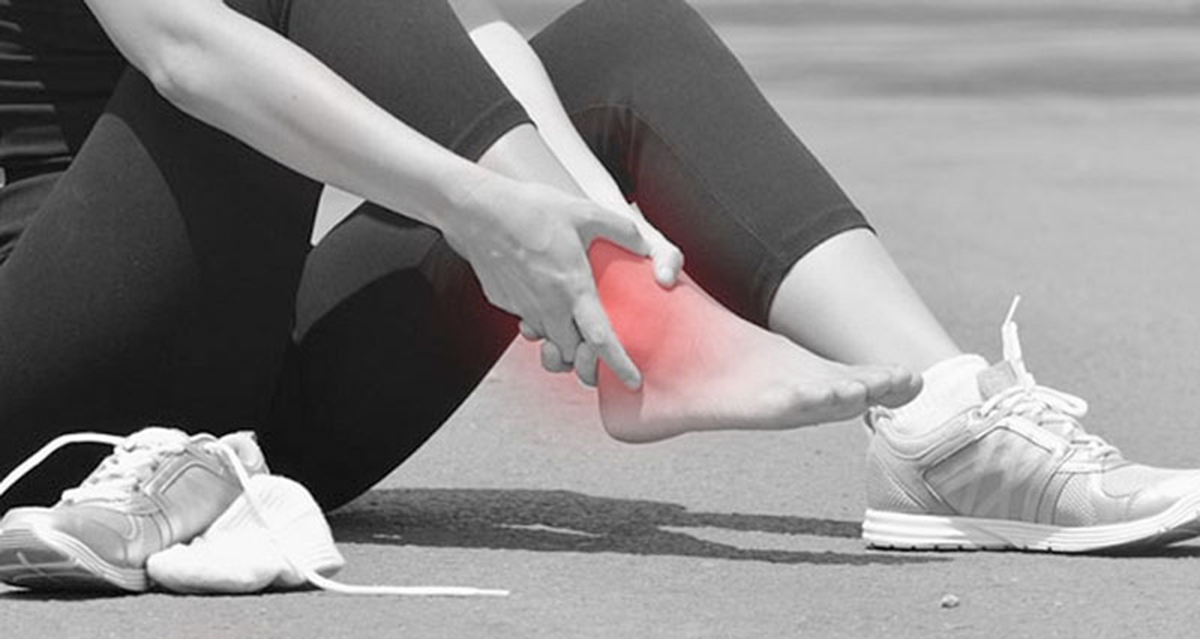Lateral ankle pain means pain on the outside of the ankle. In this section, we’ll explore both usual and rare causes of this pain. By understanding these conditions, you can better find the right treatment and manage your pain.
Acute ankle pain (sudden onset)
Acute ankle ailments involve sprains, strains, and fractures. The most prevalent among these is an ankle sprain. Ankle sprains may bring about complications, leading to lateral ankle pain long after the initial injury.
Ankle sprain
The most common ankle injury is a sprained ankle.
Symptoms include:
- Instant pain and swelling at the injury moment.
- Foot inversion or roll-out, which stretches or tears the ligaments and tendons on the ankle’s exterior.
Chronic Ankle Pain (Gradual Onset)
Chronic lateral ankle pain emerges progressively over time. Overuse or an improperly healed acute injury may cause it.
Peroneal Tendinitis (Tendinopathy)
Peroneal tendinitis/tendinopathy refers to the inflammation of the peroneal tendons running behind the bony part of the ankle’s exterior (lateral malleolus).
Symptoms include:
- Pain and swelling on the ankle’s exterior, particularly behind and underneath the lateral malleolus.
- Worsening symptoms with exercise and improvement with rest.
- Tender and painful sensation when pressing the line along which the peroneal tendons pass.
Sinus Tarsi Syndrome
Overuse or an ankle sprain can damage the sinus tarsi, a small bony canal that runs into the ankle under the talus ankle bone.
Typical symptoms include:
- Ankle pain, difficult to pinpoint, somewhere just in front of the lateral malleolus on the ankle’s exterior.
- Tenderness at the sinus tarsi opening, located on the ankle’s outer part.
- Pain or difficulty running on a curve, such as around a left-handed running track if your left foot is injured.
- Symptoms might reappear when inverting your ankle or moving it inwards.
Ankle Impingement
Ankle impingement happens when the ankle’s soft tissues get squeezed between the bones. It can occur at the front (anterior impingement) or at the back (posterior impingement) of the ankle. Symptoms of anterior impingement might also be felt on the ankle’s outer part.
Impingement could develop following a sprained ankle that hasn’t properly healed, and your ankle may seem weak. Dorsiflexion (foot pointing upwards) may recreate symptoms when performed passively by a partner or therapist.
Peroneal Tendon Dislocation
The peroneal tendon runs behind the lateral malleolus, the bony part on the outer ankle. Repeated dislocation or slipping can cause the tendon to rub against the bone.
Symptoms include:
- Gradual onset pain on the ankle’s outer part.
- Tender feeling where the tendon passes behind and under the lateral malleolus.
- Possible swelling or bruising over the area.
Stress Fracture of the Talus
The talus is the bone at the top of the ankle where the tibia or shin bone sits. Stress fractures of the talus sometimes occur in footballers and track and field athletes.
Symptoms include:
- Gradual onset pain on the outer ankle.
- Pain worsens with exercise, particularly running, and easing with rest.
- Bone scans and CT scans can confirm the diagnosis, as a stress fracture might not appear on an X-ray until healing has started.
Injuries to Keep in Mind
When diagnosing pain in the ankle’s outer part, always consider the following injuries:
- Fibula stress fracture
- Cuboid syndrome
- Complex regional pain syndrome

